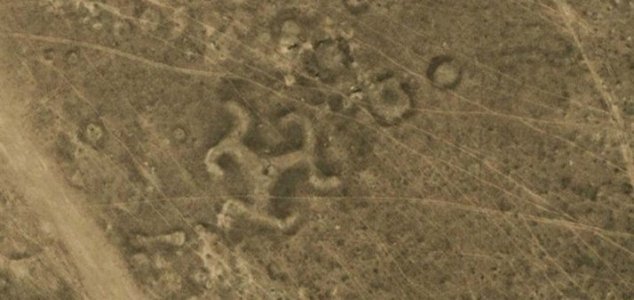
One of the more prominent geoglyphs is shaped a bit like a swastika.
Dating back up to 8,000 years and sprawled across vast areas of northern Kazakhstan, these remarkable earthworks remain one of the most enduring archaeological mysteries of recent times.
Even with the help of NASA, which has been aiding in the investigation by making it possible to take high resolution satellite images of the region, researchers still don’t know who constructed them, how they were built or what their original purpose was.
The first of the geoglyphs was identified back in 2007 and since then a total of 260 have been found scattered across the country. Some of the formations look a bit like crop circles while others consist of intricate patterns and shapes – some even covering an area of over 810,000 square feet.
Thousands of years ago the region was home to nomadic Stone Age tribes who were unlikely to have built the geoglyphs because they had never stayed in one place long enough to do so.
This raises the question therefore of who could have gathered enough people together at such an early time in history to undertake such an ambitious construction project.
“The idea that foragers could amass the numbers of people necessary to undertake large-scale projects – like creating the Kazakhstan geoglyphs – has caused archaeologists to deeply rethink the nature and timing of sophisticated large-scale human organization as one that predates settled and civilized societies,” said University of Winnipeg archaeologist Persis B. Clarkson.
Originally posted 2015-11-21 10:19:14. Republished by Blog Post Promoter













